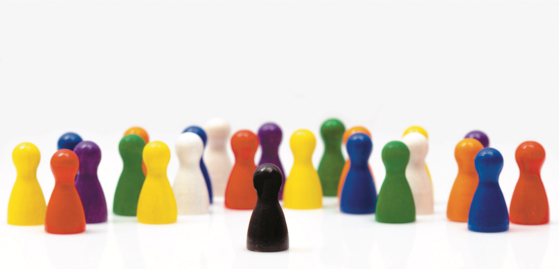[Journalism Internship] MBTI profiling offers insights, an icebreaker and maybe even love

Personality type hype has taken over Korea during the pandemic
“How have you been?”
That was the first text message Yun Ja-bin received from an ex-boyfriend after six years of silence.
Desperately curious about his intentions, Yun turned to an unexpected source to try and work out what was going on: The Myers-Briggs Type Indicator (MBTI) test.
Yun isn’t on her own. Many young Koreans today turn to the MBTI test to try and make sense of their daily lives.
Instagram posts categorizing “situational reactions,” “study habits” or “relationship tendencies” by MBTI type frequently flood feeds, while personality-based makeup or fashion tutorials are common on YouTube.
Many Korean companies have hopped onto the trend in an attempt to appeal to millennial and Gen-Z customers, developing viral tests like “perfume MBTI” or “snack MBTI” that claim to match their products with the customer’s personality types.
An MBTI profile consists of four categories and eight traits, two in each category: Extroverted and introverted; sensing and intuitive; thinking and feeling; and prospecting and judging. Four pairs of opposing traits result in 16 possible combinations.
The first letter indicates one’s level of extraor introversion, which describes how you react to your surroundings. The second letter describes the way you process information. The third stands for the way you make decisions and the fourth is determined by your method of planning.
MBTI was developed in 1942 by Isabel Briggs Myers and her mother Katharine Briggs with the intention of making “the theory of psychological types described by psychologist Carl Jung understandable and useful in people’s lives,” according to the Myers & Briggs Foundation website.
One of the most widely-used modern adaptations of the test — 16 Personalities — has been taken by over 40 million people worldwide, 70,000 of which are in Korea, claims its developer Neris Analytics.
Such MBTI tests have been popular in Korea for years, but it was a “Hangout with YOO” episode in June 2020 that rekindled the trend.
According to Naver’s datalab and Google’s search trend, the popularity of the search term “MBTI” in Korea peaked after the show on June 13, when three celebrities on the program tested their personality type using MBTI.
The test’s enduring popularity can be attributed to a variety of factors. Living in a contactless culture throughout the Covid-19 pandemic, the MBTI test has been used as a tool for building relationships, becoming a conversation starter when posting one’s test results on social media.
Within the similarities and differences of each personality, individuals are often able to easily label themselves with four letters.
From the original MBTI test, many variations — including dating, compatibility and leadership — have been conducted, allowing anybody that knows their MBTI letters to quickly find more groups they belong to.
“I do support MBTI because I think it is quite accurate,” said Ki Jung-hyun, a 20-year-old college student. “Learning my own MBTI type has helped me learn about myself. I particularly agreed about being introverted and emotional when I got INFJ. I felt as if I was being understood.”
Twenty-two year old Song Juyeong found herself feeling “even more connected to friends [she] was already close with” after learning that their MBTI types are considered compatible.
“It makes me think, ‘oh, so that is why we get along so well’,” Song said. “MBTI talks about being ‘different,’ not ‘wrong’,” said Choo Gayoung, CEO of Eruda consulting company. “We possess eight different preferences, [neither are] right or wrong, [just] different. Understanding these differences helps build a communicative relationship.”
However, not everyone is sold on the MBTI craze. There is also a healthy amount of skepticism.
“It is difficult to divide peoples’ personalities into binaries,” said Lee Jin-sil, a 29-year-old office worker. “Defining every personality into 16 types seems like an oversimplified generalization.”
“I take it more as a guideline rather than a fixed result that is definitive of my character,” said Choe, 23.
“Whether it is just a simple comparison of trivial tendencies and habits or how much we believe such personality traits to be accurate, it provides a nice starting point for a conversation with someone who I may not know too well.”
As for Yun and her ex-boyfriend, the two eventually found themselves sitting across from each other at a Spanish restaurant.
The ex — a direct, independent, thoughtful ISTP — asked Yun out again. Yun — an optimistic ESFP — agreed.
On their way back home, they exchanged their MBTI types, excited to see how their rekindled relationship might progress.
As they read about the chemistry between ISTPs and ESFPs, they once again became confident that they were meant for each other.
BY QUINNE MURAKAWA, SOL JUNG AND SHINE LEE [qmurakawa@gmail.com, soljungkr@gmail.com, shinelee4@gmail.com]










with the Korea JoongAng Daily
To write comments, please log in to one of the accounts.
Standards Board Policy (0/250자)